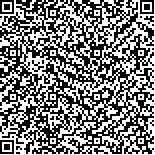| 秦天燕,高彩云,张海燕,等.2019年甘肃省肿瘤登记地区皮肤黑色素瘤流行特征及2010—2019年变化趋势分析[J].中国肿瘤,2024,33(2):118-124. |
| 2019年甘肃省肿瘤登记地区皮肤黑色素瘤流行特征及2010—2019年变化趋势分析 |
| Epidemiological Characteristics of Cutaneous Melanoma in Cancer Registration Areas of Gansu Province in 2019 and Trend from 2010 to 2019 |
| 投稿时间:2023-10-26 |
| DOI:10.11735/j.issn.1004-0242.2024.02.A006 |
|
 |
| 中文关键词: 皮肤黑色素瘤 发病率 死亡率 趋势 甘肃 |
| 英文关键词:cutaneous melanoma incidence mortality trend Gansu |
| 基金项目:兰州市科技计划项目(2022-5-102);武威市科技计划项目(WW23B02SF049) |
|
| 摘要点击次数: 485 |
| 全文下载次数: 270 |
| 中文摘要: |
| 摘 要:[目的] 评估2019年甘肃省皮肤黑色素瘤发病与死亡现状及2010—2019年变化趋势。[方法]选取2010—2019年甘肃省质量审核合格的23个肿瘤登记处上报的皮肤黑色素瘤发病和死亡及人口数据,分析2019年皮肤黑色素瘤的发病和死亡情况,采用Joinpoint对数线性回归模型,计算年度变化百分比(APC)来描述皮肤黑色素瘤发病和死亡趋势。标化率采用2000年中国普查标准人口构成(中标率)和Segi世界标准人口构成(世标率)进行计算。[结果] 2019年甘肃省肿瘤登记地区皮肤黑色素瘤粗发病率和死亡率分别为0.65/10万和0.16/10万,中标发病率和中标死亡率分别为0.48/10万和0.10/10万;农村地区皮肤黑色素瘤粗发病率高于城市(1.07/10万 vs 0.38/10万),城市地区皮肤黑色素瘤粗死亡率高于农村(0.21/10万 vs 0.08/10万)。皮肤黑色素瘤在0~39岁发病水平相对较低,40岁开始发病率随年龄增长而增加,到80岁及以上年龄组达到发病高峰,死亡主要分布在20~24岁、45~49岁、60~74岁和80~84岁,80~84岁年龄组死亡率最高。2010—2019年甘肃省肿瘤登记地区皮肤黑色素瘤中标发病率变化趋势无统计学意义(APC=-0.6%,P>0.05),但城市地区皮肤黑色素瘤中标发病率呈下降趋势,平均每年下降8.2%(P<0.05),其中女性中标发病率也呈下降趋势,平均每年下降9.1%(P<0.05);农村地区皮肤黑色素瘤中标发病率呈上升趋势,平均每年上升14.8%(P<0.05),其中女性中标发病率也呈上升趋势,平均每年上升13.7%(P<0.05)。2010—2019年甘肃省肿瘤登记地区皮肤黑色素瘤中标死亡率呈下降趋势,平均每年下降9.6%(P<0.05)。[结论] 2010—2019年甘肃省肿瘤登记地区皮肤黑色素瘤发病率和死亡率水平相对较低,城乡地区发病和死亡存在差异,农村地区发病率存在上升趋势,其防控不容忽视,应针对性加强重点人群尤其农村地区女性人群的预防和控制。 |
| 英文摘要: |
| Abstract:[Purpose] To analyze the incidence and mortality rates of cutaneous melanoma in cancer registration areas of Gansu Province in 2019 and the trend from 2010 to 2019. [Methods] The incidence and death of cutaneous melanoma and population data from 2010 to 2019 were obtained from 23 cancer registries of Gansu Province. Joinpoint Log-linear regression model was adopted and annual percentage change(APC) was calculated to investigate the trends of incidence and mortality of cutaneous melanoma. The age-standardized incidence/mortality rate of China (ASIRC, ASMRC) and world(ASIRW, ASMRW) were calculated using the 2000 China Census standard population and Segi’s world standard population, respectively. [Results] In 2019, the crude incidence and mortality rates of cutaneous melanoma in the cancer registration areas of Gansu Province were 0.65/105 and 0.16/105, respectively; and the ASIRC, ASMRC were 0.48/105 and 0.10/105, respectively. The crude incidence rate of cutaneous melanoma was higher in rural areas than that in urban areas(1.07/105 vs 0.38/105), and the crude mortality rate was higher in urban areas than that in rural areas(0.21/105 vs 0.08/105). The incidence of cutaneous melanoma was relatively low in 0~39 years old, and increased after age of 40 years old, reaching the peak in age group of 80 years old and above. The mortality rate was mainly distributed in age groups of 20~24, 45~49, 60~74 and 80~84 years old, with the highest mortality rate in age group of 80~84 years old. There was no significant change in the overall incidence rate of cutaneous melanoma from 2010 to 2019 (APC=-0.6%, P>0.05). But the ASIRC in urban areas from 2010 to 2019 showed a decreasing trend, with an average APC of 8.2%(P<0.05) and that of females was 9.1%(P<0.05); while the ASIRC in rural areas showed an increasing trend with an APC of 14.8%(P<0.05); and that of females was 13.7%(P<0.05). From 2010 to 2019, the mortality rate of cutaneous melanoma in cancer registration areas of Gansu Province showed a decreasing trend, with an APC of 9.6% (P<0.05). [Conclusion] From 2010 to 2019, the incidence and mortality rates of cutaneous melanoma in cancer registration areas of Gansu Province were relatively low, and there were significant differences in incidence and mortality rates between urban and rural areas. The incidence in rural areas showed an increasing trend, indicating that the prevention and control of cutaneous melanoma should be targeted at key groups, especially women in rural areas. |
|
在线阅读
查看全文 查看/发表评论 下载PDF阅读器 |